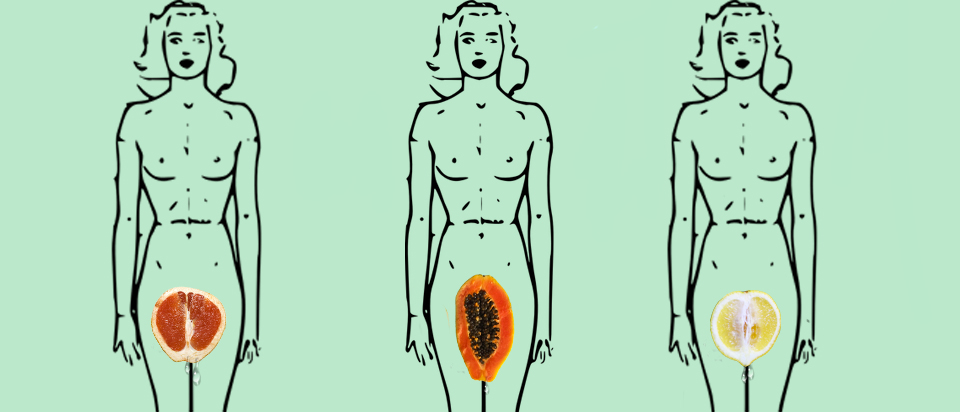Take-home message:
-Women have an organ analogous to the male prostate that is able to produce a liquid that can be ejaculated upon orgasm. Not all women produce ejaculate.
-The scientific study of female ejaculation and the female prostate has been greatly hindered by bad science, cultural taboos and sexism.
Female ejaculation, or the emission of a clear/whitish fluid from the female genitalia upon orgasm, was first referenced in Indian poems from the 7th and 11th centuries in rather stunning detail. Herophilos of Chalkedon made the first scientific description of what would later be named the female prostate in 300 BC, and Aristotle, Hippocrates, the Kama Sutra, and Galen all made further description of female ejaculation prior to 1700.
In 1642 a Dutch researcher, Regnier De Graaf, made a clinical description of the female prostate using modern scientific methods. In the 1800’s, Alexander Skene characterized the organ further and replaced its name with his own, calling it the Skene’s glands.
But from here on the story of female ejaculation gets messy. Societal ideas of femininity, masculinity, gender and sexuality seemed to influence the scientific study of female ejaculation. A lot of good studies on the topic got overlooked, and some bad science got overused.
The tale of female ejaculation and the female prostate is important to tell not only because many women still struggle with orgasms, sexual fluids and their sex lives, but also because it serves as a shining example of how culture can influence science.
So, without further ado, let’s get down to the nitty gritty.
A Remake of an Old Classic: Can Women Ejaculate?
At the beginning of the 20th century a renaissance of female ejaculation studies occurred. Early papers discussing the phenomenon lacked a unified opinion on whether a liquid may exit a woman’s genitals upon orgasm, and if it did, where it came from or what it was made of.
Ernst Grafenberg (now famous for first describing the G-spot) introduced a controversial idea in the 1950’s when he postulated that stimulation of the G-spot was responsible for the ejaculation of fluid through the Skene’s glands. Despite his status as a respected researcher his thorough descriptions of the female ejaculation were seen by academia as anecdotal at best and falsified at worst.
If the work of experts was not being recognized, it seemed unlikely that others would have luck publishing pro-female ejaculation research. And indeed, after Grafenberg came quite a bit of writing outright rejecting the notion of female ejaculation. Notably, even Alfred Kinsey, famous for inventing the Kinsey scale, and in many ways the father of modern sexology, weighed in on the topic of female ejaculation, claiming that it truly was contractions of the vagina pushing out the fluid from the vaginal walls, and therefore not an “actual ejaculation.”
The few papers in support of female ejaculation that were published postulated that female ejaculation might originate from small glands located just below the urethra. At the same time, another theory started making waves:that female ejaculation was just urinary incontinence.
But, for all of the papers being published, no actual studies were being performed. It wasn’t until the 80’s that studies of female ejaculation started occurring and turning up evidence for female ejaculation. A couple of literature reviews on this subject in the mid 80’s consider the study by Addiego et al. in 1981 to be the first “hard” research done on this subject. It was a case study and “provided objective evidence supporting the hypothesis that female ejaculation, a partial, infertile homologue of male ejaculation, exists,” and that it was at least in part chemically distinct from urine.
Are You Sure You’re Not Just Peeing? Really Sure?
The landscape of research shifted slightly after this case study, as the goal was no longer to prove or disprove the existence of the female ejaculation, but now to classify its composition and source.
To do this, several more studies were conducted in the 1980’s that either definitively classified urine and ejaculate as two distinct fluids or came to no conclusion at all. The only studies opposing this conclusion were performed by Goldberg et al. in 1983, and Alzate in 1985. Goldberg tested six women, Alzate only one. While Goldberg concluded that “the ejaculate and urine seem to be one and the same,” Alzate only wrote that the ejaculate and urine were chemically indistinguishable. Nonetheless it’s Alzate’s study that was cited again and again as proof that female ejaculate was urine.
For more on urinanalysis and Alzate’s study’s flaws click here
Most of the urine analysis studies compared female ejaculate with urine across some variation of chemical parameters: creatinine (a muscular waste product), urea (the main component of urine), pH, prostate specific antigen, or glucose. There are many reasons why the concentrations of these components in urine may change. We should not ignore the fact that, just because two liquids are similar across these parameters, it doesn’t mean they are the same.
Alzate’s study did not primarily examine the chemical composition of the fluid, analysed only 1 sample, and even within that sample found some large chemical differences between the urine and ejaculate (like 14 mg of glucose in ejaculate vs 1.9 mg in urine). There is a space between being certain ejaculate is not urine and being certain that it is, and that is where this study lies.
The 80’s and 90’s saw several more studies that further proved the non-urine nature of female ejaculate, so with the existence and nature of the ejaculate seemingly sorted, research shifted to finding its source.
Do Women Have A Prostate?
De Graaf had initially coined the term female prostate for the female ejaculatory organ, but this terminology had been rejected and reworked into the Skene’s glands, since it wasn’t thought the female prostate (if it even existed) was analogous to the male prostate. Well, the late 80’s saw the resurgence of the name ‘female prostate’ for this organ, as the evidence mounted for the analogous nature of the male prostate gland and Skene’s glands.
The evidence pointed to a female prostate that was the source of female ejaculate, as well as a highly functioning hormone producing organ, with function very similar to the male prostate. Dr Zaviacic, who performed hundreds of autopsies, chemical and clinical experiments, reported that “the female prostate was observed at autopsy in two thirds of women of reproductive age”. He also wrote that there was massive variation in prostate size, function and component ratio from woman to woman. These variations could explain why only some women ejaculate, and why the volume and colour of that ejaculate seemed so variable.
With the name “female prostate” poised to fall back into usage, semantic arguments seemed to dominate the conversation. Scientists argued over minute anatomical points, and whether the prostates found in women could be considered “well developed.” They argued that since female ejaculate served no reproductive function, it shouldn't be called ejaculate. And they argued over the very definition of ejaculate. Did an ejaculation originate, by definition, exclusively from a penis? Did an ejaculation need to contain sperm?
Thankfully, in 2001 the Federative Committee on Anatomical Terminology officially renamed the Skene’s glands back to female prostate’’ and ended this tedious terminology argument once and for all.
Regardless of what it was called though, it seemed that the world had finally reached a consensus that women have prostates and can expel a fluid upon orgasm that is not urine. Research in support of female ejaculation continued to appear, and systematic reviews, like this one by Pastor, further highlighted that female ejaculation was not due to urinary incontinence.
Thus, the long debate seems to have ended.
There was actually one more study, in 2009, that denied female ejaculation. It suffered from some serious flaws however. Click here to read about it
Ahmed Shafik undertook an electrophysiological study of the female orgasm in 2009, investigating the hypothesis that “female orgasm is not associated with ejaculation.” After testing 38 married, middle-aged women with children via clitoral stimulation alone, he concluded that female ejaculation did not exist.
Now raise your hand if you see problems with this study. A small sample size with no selection for a history of ejaculation, non-varied demographics, and no G-spot stimulation despite evidence that that is the mechanism by which ejaculation is triggered. It’s just bad science.
Ok, Women Have Prostates. So, What?
21st century studies have been able to make great progress characterizing the female prostate. We now know it can suffer from the same diseases as the male prostate, like carcinoma, prostatitis, and prostate cancer. We also know that inflammation of the Skene’s glands may be implicated in chronic UTIs, and that these glands can develop painful cysts.
New studies have found antimicrobial compounds, similar to those found in male ejaculate, in female ejaculate. So, it may be that female ejaculation could confer a protection against UTIs.
One of the last remaining mysteries was highlighted in a 2015 study that took pelvic ultrasounds of seven women who self-reported experiencing ejaculation. It found that before and after orgasm the bladders of the women were empty, but during the build up to orgasm, the bladder rapidly filled, and then rapidly emptied upon ejaculation. This large-volume ejaculate was found to be chemically similar to the women’s urine (though not identical).
The current evidence points to women not only ejaculating but experiencing two types of ejaculations: a small-volume ejaculate that is milky in colour and that originates primarily from the prostate, and a clear, larger-volume ejaculate originating primarily from the bladder.
Bad Science Doesn’t Only Affect Scientists
The bad science that paved the historical road of female ejaculation has had some serious effects. Our sordid history of female prostate denial has created a society unwilling to accept its existence, despite the scientific evidence.
For instance, studies have shown that people with vaginas are only shown reaching orgasm in pornographic movies in 18% of cases, with female ejaculation being shown 5% of the time, (As opposed to 78% and 90% respectively for men).
In 2014 Britain banned pornographic depictions of female ejaculation, claiming that the fluid ejaculated is really urine. They justified this on the basis that urine is unsterile and could cause an infection if a participant had an open wound. That’s true of all sexual fluids, but I don’t see them banning male ejaculation.
It’s hard (if not impossible) to quantify the effects the non-acceptance of female ejaculation has had on women. In the most serious sense, cases of female prostate cancer and chronic UTIs have likely gone undiagnosed or untreated. In a less life-threatening sense, many women have had to face a body of evidence that denies their everyday sexual experience. A quote from a research paper on this topic really highlights what women who ejaculated were up against: “The ignorance and/or confusion still prevalent among women about the anatomy and physiology of their sexual organs may make them mistake either vaginal lubrication or stress urinary incontinence for an ‘ejaculation’.”
We should let the long journey to the “discovery” of the female prostate serve as a cautionary tale. When we let poorly performed studies, misinterpreted results, and gendered assumptions drown out real evidence, we make mistakes, delay discoveries, and end up looking pretty dumb in retrospect.
I am fascinated that there still remain mysteries to uncover about our bodies, and truly excited to see what research is being done on female ejaculation and the female prostate now. I’m also waiting with bated breath to see when Gray’s Anatomy decides include the female prostate in its textbooks.
Want to comment on this article? Here's it posted on our Facebook page!







